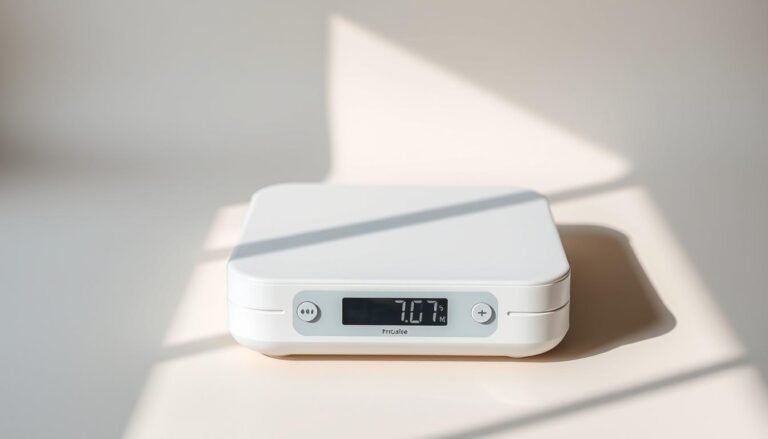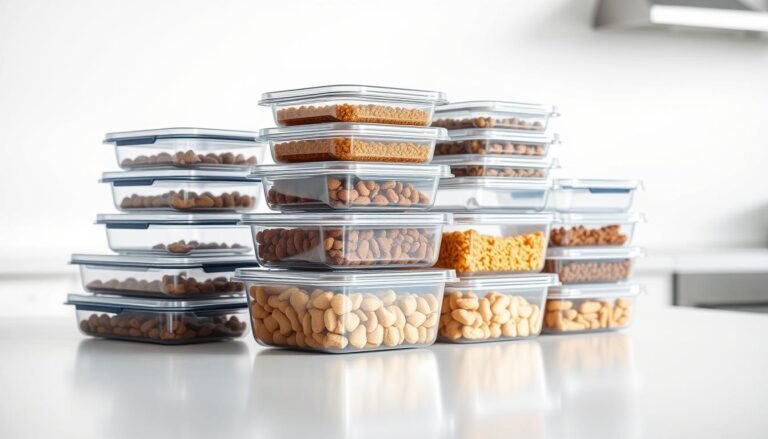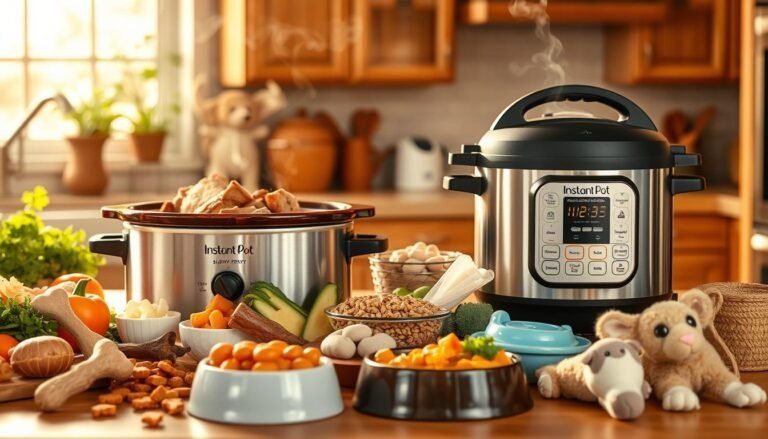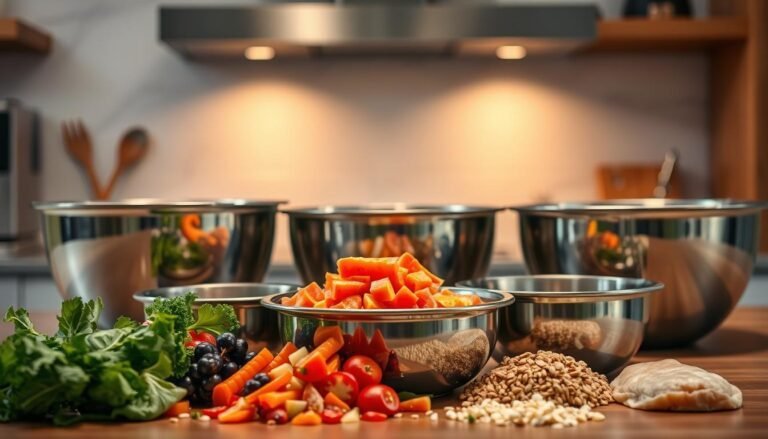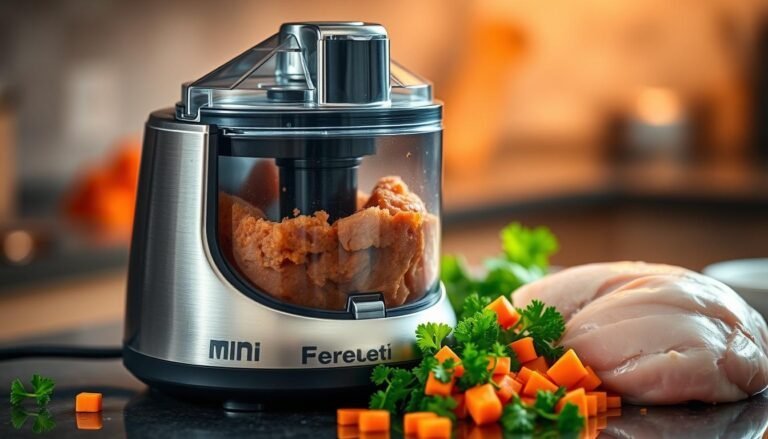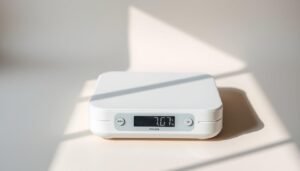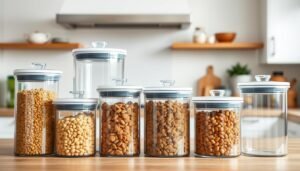It’s very important to feed your pet the right food for their health. The right tools are as key as the food itself. Non-toxic measuring sets keep harmful chemicals out of your pet’s meals.
Creating the perfect pet recipe needs accuracy. That’s where pet recipe tools help. They make sure pets get the right mix of food.
Key Takeaways
- Using precise measuring tools is crucial for pet recipe accuracy.
- Non-toxic materials ensure the health and safety of pets.
- Accurate measurements help in maintaining a balanced diet for pets.
- Safe measuring tools prevent the introduction of harmful chemicals into pet food.
- Pet owners should prioritize the use of BPA-Free measuring cups and spoons.
The Importance of Precise Measurements in Pet Nutrition
In pet nutrition, exact measurements are key. Accurate pet meal measurement helps keep nutrients in balance. This balance is crucial for pets to stay healthy.
How Measurement Errors Affect Pet Health
When pet food is not measured right, pets can get sick. Too much or too little food can harm their health. This is because of wrong measurements.
Nutritional Balance and Portion Control
Getting the right nutritional balance and portion control is vital. Precise measurements help pets get the right nutrients, vitamins, and minerals.
Different Measurement Needs for Dogs vs. Cats
Dogs and cats need different foods. It’s important to know these differences. This knowledge helps in pet food preparation and using kitchen essentials well.
By focusing on exact measurements and the right kitchen essentials for pet owners, pets can be healthier and happier.
Understanding BPA and Its Risks to Pets
Using BPA in pet food tools can harm pets. It’s key to know what BPA is and its dangers. BPA, or Bisphenol A, is a chemical in some plastics and resins.
What is BPA?
BPA is in many products, like food and water containers. It’s been used for years in plastics and resins. But, it’s a worry when it’s in food and water items.

Health Concerns for Pets Exposed to BPA
Pets eating from BPA containers or utensils face health risks. Studies show BPA can get into food, especially when it’s hot. This means pets might eat this chemical.
Scientific Research on BPA and Animals
Many studies look at BPA’s impact on animals. A big worry is its effect on the endocrine system.
Endocrine Disruption in Pets
BPA messes with the endocrine system, which controls hormones. This can cause health issues in pets, like reproductive problems and growth issues.
Pet owners making homemade meals need to know about BPA risks. Using safe pet cooking utensils and chemical-free measuring spoons helps avoid BPA exposure.
BPA-Free Measuring Cups and Spoons for Pet Recipe Accuracy
For pet owners who make their pets’ meals, BPA-free measuring tools are key. They help keep the food balanced and safe. The right tools are important for a good meal.
Materials Used in BPA-Free Measuring Tools
BPA-free measuring cups and spoons are made from safe materials. You can find them in stainless steel, silicone, and glass. Stainless steel is tough and won’t scratch easily. Silicone is bendy and simple to clean. Glass doesn’t hold smells or tastes.
Certification Standards to Look For
When picking BPA-free measuring tools, look for safety certifications. Important ones are:
- US FDA Compliant: Shows it meets U.S. Food and Drug Administration rules.
- BPA-Free Certification: Means it doesn’t have Bisphenol A.
- Food Grade Material: Means it’s safe for food contact.
Durability and Longevity Considerations
The lasting power of measuring tools is key. Think about:
| Material | Durability | Maintenance |
|---|---|---|
| Stainless Steel | High | Easy to clean, dishwasher safe |
| Silicone | Medium | Flexible, easy to clean, dishwasher safe |
| Glass | High | Non-porous, easy to clean, dishwasher safe |
Choosing the right BPA-free measuring cups and spoons is important. It helps keep your pets’ homemade meals safe and accurate.
Essential Features of Quality Pet Food Measuring Tools
The quality of pet food measuring tools is key to your pet’s diet. Look for tools that are accurate, easy to use, and last long.
Accuracy and Calibration
Measuring tools need to give exact measurements. This ensures your pet gets the right nutrients. Choose tools that are well-calibrated and easy to read.
Ergonomic Design for Easy Handling
Tools should be easy to hold, especially for those with limited dexterity. They should be simple to grip and move around.
Cleaning and Maintenance Requirements
Cleaning tools is important for keeping them clean. Tools that can go in the dishwasher make cleaning easy.
Dishwasher Safety
Check if tools are safe for the dishwasher. Many good pet food measuring tools can handle dishwasher cycles.
| Feature | Importance | Benefit |
|---|---|---|
| Accuracy | High | Ensures nutritional balance |
| Ergonomic Design | Medium | Ease of handling |
| Dishwasher Safety | High | Simplifies cleaning |
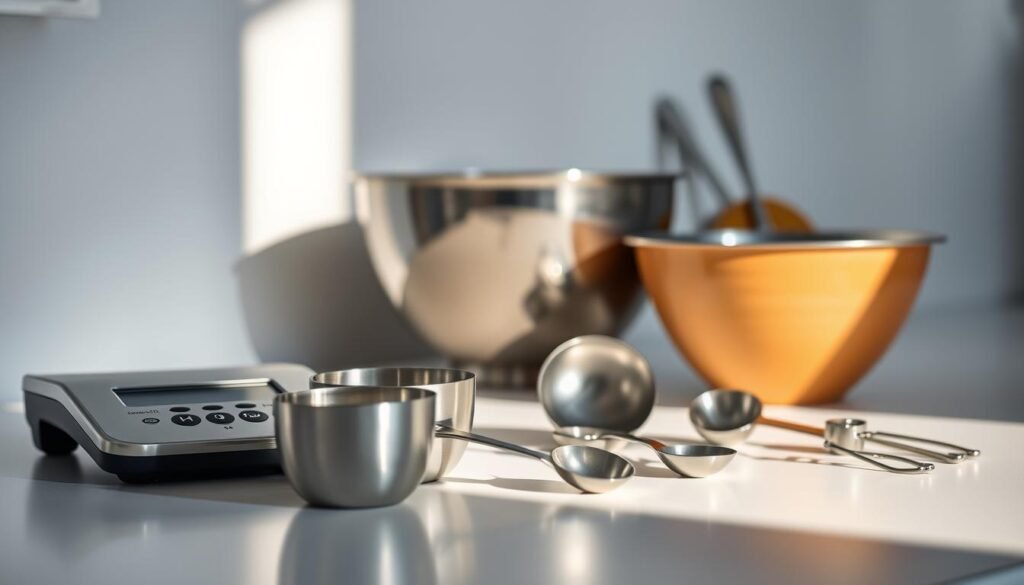
By focusing on these key features, pet owners can find pet-friendly measuring cups and other kitchen essentials. These tools make healthy meals easier and more precise. This helps keep pets healthy and happy.
Types of Measuring Tools for Different Pet Food Preparations
Getting the right amount of food for your pet is key. The tools you use matter a lot. They help make sure your pet gets the nutrients they need for good health.
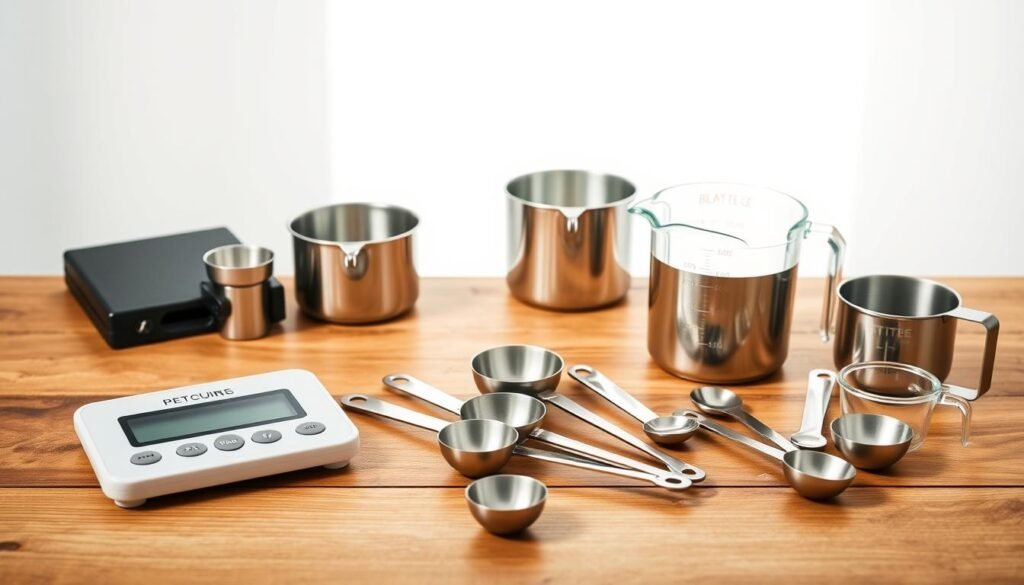
Dry Food Measuring Cups
Dry food measuring cups are made just for pets. They come in different sizes and are safe. You can find more at pet food measuring tools online.
Liquid Measuring Cups
Liquid measuring cups are needed for adding liquids to pet food. They have clear lines to show how much you’re adding.
Measuring Spoons for Supplements and Additives
Measuring spoons are important for adding special foods to your pet’s diet. They come in many sizes and are easy to clean.
Digital Scales for Ultimate Precision
Digital scales give the most accurate readings for pet food. They work for both dry and liquid foods. They’re a must-have for making homemade pet food.
Choosing the right tools is crucial for a balanced diet for your pet. Whether it’s dry food, liquids, or supplements, the right tools are essential for pet food preparation.
Top BPA-Free Measuring Sets for Homemade Pet Food
For pet owners who make their pet food at home, picking the right BPA-free measuring tools is key. These tools must be accurate and safe. The market has many measuring sets made from different materials, each with its own benefits.
Stainless Steel Options
Stainless steel measuring tools are tough and don’t rust. They’re easy to clean and keep up, which is why many pet owners like them. Brands like Cuisinart and KitchenAid make high-quality stainless steel sets that are BPA-free.
Silicone Alternatives
Silicone measuring tools are flexible, perfect for both dry and liquid ingredients. They’re also dishwasher safe, which is super convenient. Sets from brands like Le Creuset are not only useful but also come in fun colors, making cooking more fun.
Glass Measuring Tools
Glass measuring tools are safe and don’t hold onto smells or tastes. They’re great for those who like a classic cooking style. Pyrex’s glass measuring cups are a favorite among many cooks.
Ceramic Options
Ceramic measuring tools are safe for making pet food too. They look nice and can be used for both measuring and serving. But, they need a bit more care since they can chip easily.
| Material | Durability | Ease of Cleaning |
|---|---|---|
| Stainless Steel | High | Easy |
| Silicone | Medium | Easy |
| Glass | High | Easy |
| Ceramic | Medium | Moderate |
When picking a BPA-free measuring set, think about what you need. Look at durability, how easy it is to clean, and what you like best.
Transitioning from Commercial to Homemade Pet Food
Switching your pet to homemade food needs careful planning. This change can greatly affect your pet’s health. So, it’s important to do it right.
The Critical Role of Accurate Measurements
Getting the right amounts of ingredients is key. Homemade pet food doesn’t have the same standardization as commercial food. Owners must measure ingredients carefully to avoid nutritional problems.
Gradual Transition Strategies
Start by mixing a little homemade food with their old food. Slowly add more homemade food over 7-10 days. This helps their stomach get used to the new food.
Monitoring Your Pet’s Response to Diet Changes
Watch how your pet reacts to the new food. Look for changes in energy, coat, and stool. If they don’t seem right, talk to your vet to make changes.
| Transition Day | Commercial Food | Homemade Food |
|---|---|---|
| 1-3 | 75% | 25% |
| 4-6 | 50% | 50% |
| 7-10 | 25% | 75% |
| After 10 | 0% | 100% |
How to Properly Use Measuring Tools for Pet Recipes
Measuring ingredients right is key to making healthy homemade pet food. It’s important to know how to use measuring tools correctly.
Techniques for Measuring Dry Ingredients
For dry ingredients like flour or oats, use a dry measuring cup. Fill the cup too much, then level it off with a knife. This way, you avoid packing the ingredient down.
Techniques for Measuring Liquid Ingredients
For liquids like broth or oil, use a liquid measuring cup. Place it on a flat surface and check the level at eye level. This method stops spills and gets the right amount.
Converting Between Different Measurement Systems
Recipes might need you to switch between measurement systems, like cups to grams. Use a reliable conversion tool or chart for this. It’s crucial for ingredients with different densities.
Learning these measuring techniques helps make sure your pet’s meals are healthy and safe.
Common Measurement Mistakes in Pet Food Preparation
Getting the right amounts in pet food is key. Yet, many mistakes can happen if you’re not careful. Making sure your pet gets the right nutrients is crucial for their health. Precise measurements are important for this balance.
Overfilling vs. Level Measurements
One big mistake is overfilling measuring cups. Level measurements are key for accuracy. When you measure dry ingredients, use a straight edge to level it off. This ensures you don’t pack it down or leave it heaping.
Confusing Volume and Weight Measurements
Another big error is mixing up volume and weight measurements. Volume measures how much space an ingredient takes up. Weight measures its actual mass. For exact nutrition, use the right type of measurement as the recipe says.
Inconsistent Measuring Techniques
Using different measuring methods can cause nutritional imbalances. Standardizing your measuring methods makes sure your pet gets the same nutrients every time.
The “Eyeball Method” Pitfall
Using the “eyeball method” or guessing amounts is very unreliable. It can lead to feeding your pet too little or too much. Always use precise measuring tools instead.
Knowing these common mistakes and avoiding them helps make your pet’s meals nutritious and safe.
Integrating Precise Measuring Tools into Your Pet Care Routine
Precise measuring tools are key to keeping your pet healthy. Adding them to your routine is easy. They help make sure your pet gets the right food.
Creating an Efficient Meal Prep System
Begin by picking a spot for meal prep. Use precise measuring tools to measure ingredients right. This makes meals healthy and prep easier.
Batch Preparation and Storage Solutions
Batching meals saves time and keeps them healthy. Use tools to make food batches. Store them in airtight containers to stay fresh. Label containers with date and contents.
Teaching Family Members Consistent Measuring Practices
It’s important to teach everyone to use precise measuring tools right. Make a simple guide or have someone show how to measure.
Conclusion: Ensuring Your Pet’s Health Through Precise Measurements
Precise measurements are key to keeping your pet healthy, especially when making homemade pet food. Using BPA-Free Measuring Cups and Spoons helps ensure your pet gets the right nutrients. Wrong measurements can cause nutritional problems, harming your pet.
Investing in good, BPA-free measuring tools is important. It shows you care about your pet’s diet. This is vital for a balanced diet that fits your pet’s needs. Accurate measurements are crucial for your pet’s health, no matter the food type.
Using precise measuring tools is a smart way to care for your pet. It shows you’re serious about their nutrition. This effort can greatly improve your pet’s health, making sure they get the nutrients they need.
FAQ
What is the importance of using BPA-free measuring tools for pet recipes?
How do measurement errors affect pet health?
What materials are used in BPA-free measuring tools?
What certification standards should I look for in BPA-free measuring tools?
How can I ensure accurate measurements when preparing homemade pet food?
What are the benefits of using digital scales for pet food preparation?
How do I transition my pet from commercial to homemade food safely?
What are common measurement mistakes to avoid in pet food preparation?
How can I integrate precise measuring tools into my pet care routine?
Are there specific measuring tools recommended for different types of pet food?

Ryan Conlon is the founder of PetFriendlyRecipes.com, a resource dedicated to helping pet owners create simple, healthy meals and treats at home. With a background in web publishing and a focus on practical content, Ryan built the site to make homemade pet food easier to understand and more accessible for everyone.
Subscribe to Our Newsletter

